Increased Manufacturing Process Requirements: Innovative dry battery electrode coating, integrated electrode cutting, laser welding, and combined casting with CTC provide significant differentiation compared to traditional cylindrical batteries.
5.1 Dry Battery Technology
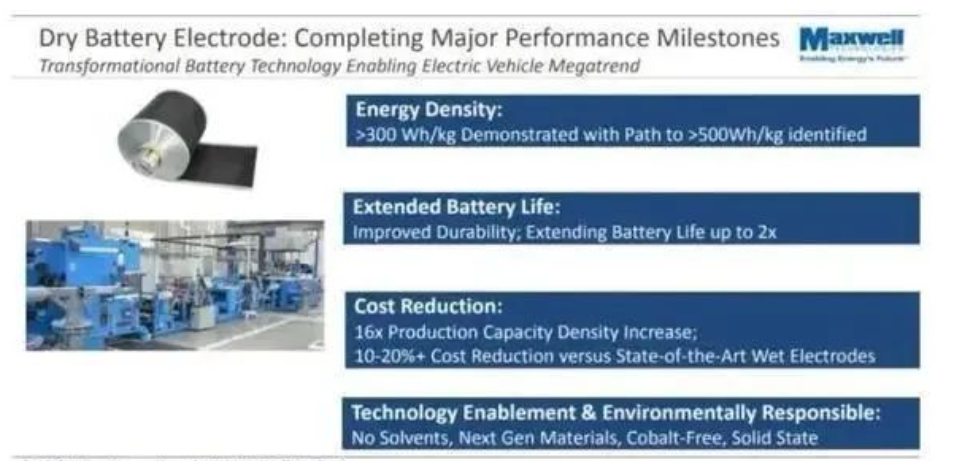
Dry electrode technology can be applied to both positive and negative electrodes.
5.1.1 Traditional Wet Process
The traditional wet process involves placing materials in a solvent, drying, and compressing into a film. It uses solvent materials with adhesive properties, with NMP (N-Methyl-2-Pyrrolidone) being a common solvent. After mixing the solvent with adhesive properties with negative or positive electrode powder, the slurry is coated on the electrode current collector and dried. Solvents are toxic and require recovery, purification, and reuse, and it involves a large, expensive, and complex electrode coating machine. Therefore, Tesla addressed this issue in the design of the 4680 battery by utilizing dry electrode technology.
5.1.2 Dry Battery Process
Dry electrode technology completely eliminates the step of adding a solvent, streamlining the complex coating and drying processes. It involves mixing active positive and negative electrode particles with polytetrafluoroethylene (PTFE) to create a fibrous mixture, which is then directly ground into a thin film and pressed onto aluminum or copper foil to create positive and negative electrode sheets.
Compared to traditional techniques, dry electrode technology allows for adding more material when achieving the same requirements for the positive electrode since powder density is higher than that of liquids. This increases the thickness of the electrode material from 55 micrometers to 60 micrometers, enhancing electrode activity and improving energy density by approximately 5%, further enhancing battery cycle life. Additionally, the absence of solvents reduces production costs. Tesla recognized the importance of reliable battery technology early on, leading to its acquisition of Maxwell, a leading battery technology company, in 2019, and the integration of its dry electrode technology into the new generation of 4680 batteries.
5.1.3 Advantages of Dry Battery Technology
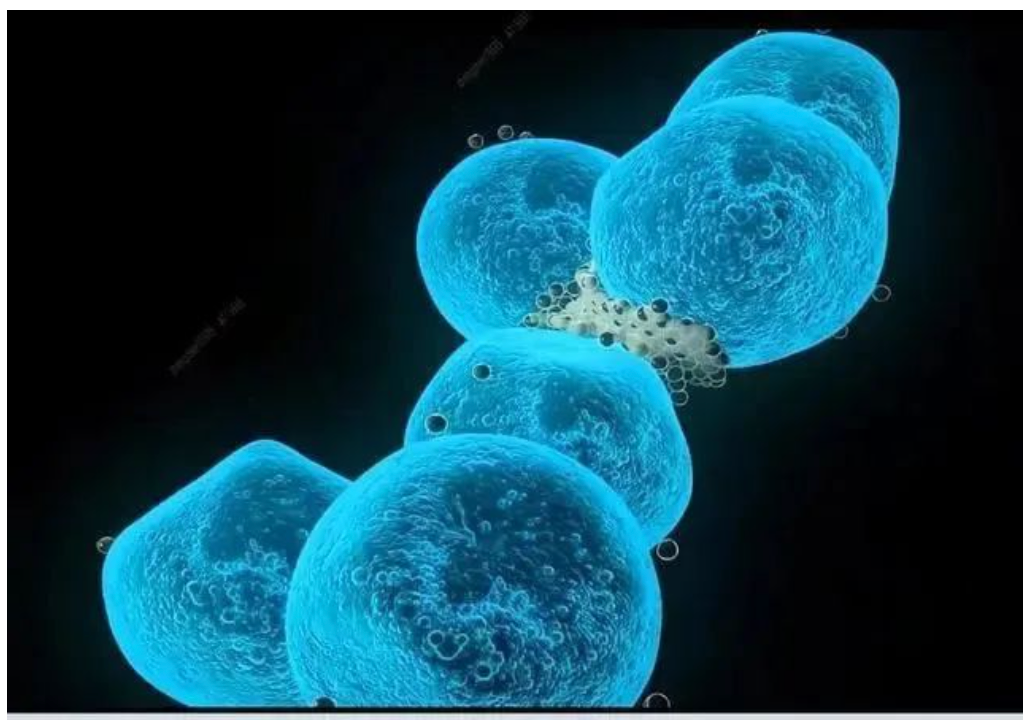 Simplified Process and Cost Savings: The absence of solvents eliminates the need for expensive coating machines.
Simplified Process and Cost Savings: The absence of solvents eliminates the need for expensive coating machines.
Improved Production Efficiency: Dry electrode technology increases production speed by up to seven times compared to wet electrode technology. It achieves 16 times higher production density and reduces costs by 10%-20% compared to wet electrode technology.
Increased Battery Energy Density: Solvent-containing processes struggle with good lithium-carbon mixing, leading to initial capacity losses. Dry electrode technology significantly improves this issue, enhancing battery energy density. By increasing the thickness of the positive electrode material from 55μm to 60μm, it boosts active electrode material content, resulting in a 5% energy density increase, ensuring power density above 300 Wh/kg and a pathway to achieving 500 Wh/kg.
Extended Battery Lifespan: Improved battery durability doubles battery lifespan.
High Compatibility with Industry Trends (solvent-free, no drilling, next-gen materials, solid-state batteries) and Environmental Protection.
5.1.4 Challenges of Dry Battery Process
Currently, the process is not mature, and the batteries need to be thick, which makes it challenging to roll cylindrical cells.
5.2 Winding
Due to the presence of electrode tabs, battery production involves frequent starts and stops, while 4680 batteries use full tabs, enabling continuous high-speed production at up to 300 ppm, compared to typical square cells, which operate at only 10-20 ppm.
5.3 Assembly
Efficiency is improved through continuous flow assembly. Tesla designed a production line with a 20 GWh capacity, increasing production sevenfold. Tesla vertically integrated the assembly process with Grohmann and Hibar machine design teams, consolidating assembly steps into a single machine and eliminating unnecessary transport steps.
5.4 Formation
By improving the formation efficiency, formation investment costs are reduced by 86%, and the footprint is reduced by 75%. Formation involves charging and discharging batteries and checking battery quality. Traditional formation involves charging and discharging individual cells, while Tesla simultaneously charges and discharges thousands of cells, significantly enhancing formation equipment cost-effectiveness and density.
Tesla Battery Disassembly
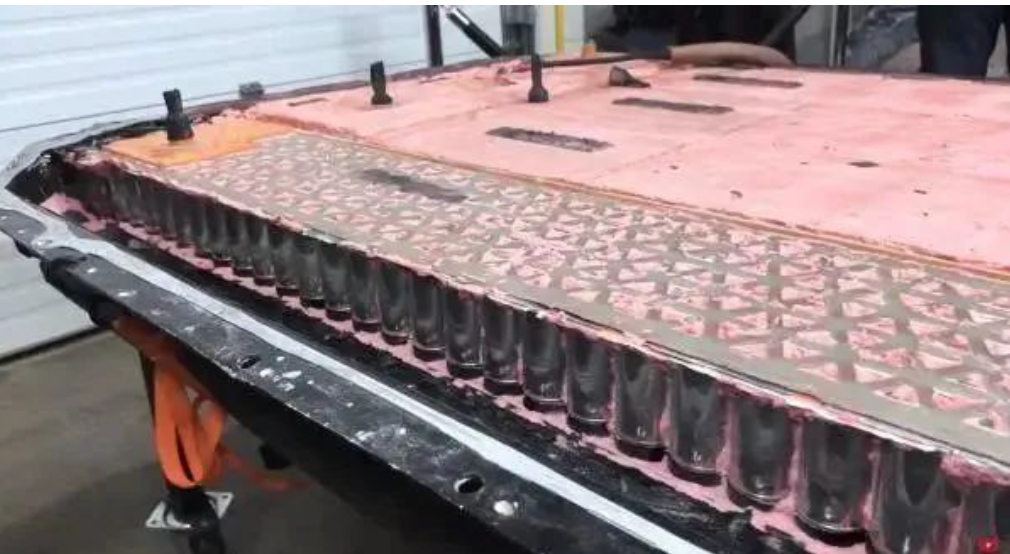 The battery pack and seat integration are extremely high, with the driver sitting almost directly on top of the battery. Components like seats and central armrests are directly attached to the top cover of the battery chassis, with only a few beams separating them.
The battery pack and seat integration are extremely high, with the driver sitting almost directly on top of the battery. Components like seats and central armrests are directly attached to the top cover of the battery chassis, with only a few beams separating them.
The battery pack is connected to the vehicle body via 38 fixed bolts. By removing these bolts and disconnecting the wiring harness, the entire battery pack, along with the front row seats and central armrest, can be removed from the vehicle using a lift.
 The 4680 battery pack is secured using a large amount of pink adhesive (polyurethane), which fills not only the surface but also the internal spaces of the battery cells and components. This adhesive serves two main purposes: it provides structural support and protection by uniting all the cells and components into a single unit and absorbs energy to protect the cells. It also prevents cells from shifting due to the many gaps between cylindrical cells in the 4680 pack.
The 4680 battery pack is secured using a large amount of pink adhesive (polyurethane), which fills not only the surface but also the internal spaces of the battery cells and components. This adhesive serves two main purposes: it provides structural support and protection by uniting all the cells and components into a single unit and absorbs energy to protect the cells. It also prevents cells from shifting due to the many gaps between cylindrical cells in the 4680 pack.
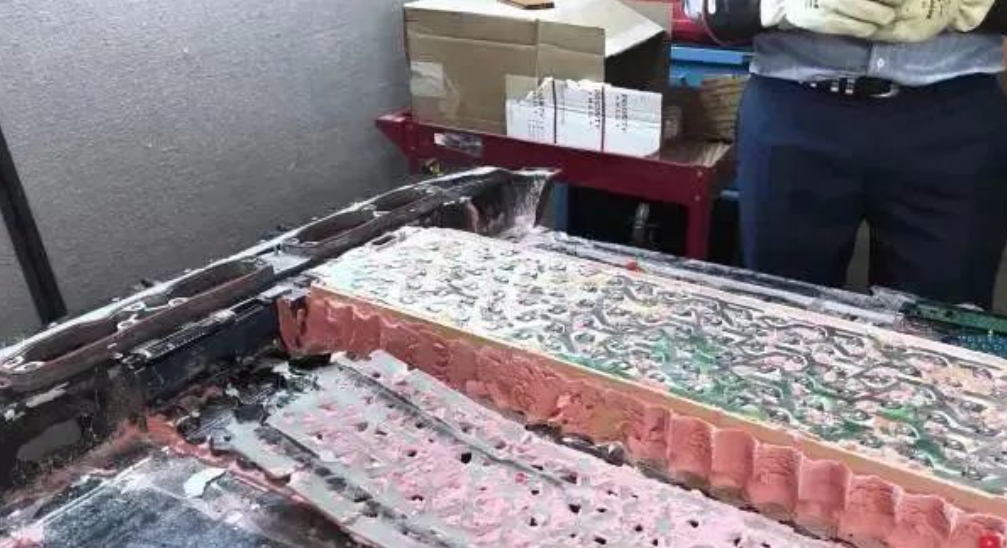 Dry ice is used to remove the adhesive.
Dry ice is used to remove the adhesive.
On top of the 4680 battery pack, there is a flexible nylon cover with a honeycomb structure that integrates wiring harnesses for voltage sampling and temperature sensors.
Underneath, there is a current collector that connects the individual cells in series and parallel. Unlike wire bonding used in previous 2170 battery packs, the 4680 battery employs laser welding for enhanced connection reliability. Nine cells are connected in parallel in a group, with all the positive terminals of the group being connected and then aggregated into the negative terminal of the next group. Because of the 4680's design with full tabs (no tabs on the sides), the current collector has a tree-branch-like structure.
The entire 4680 structural battery pack consists of 828 individual cells, divided into four regions by three partition plates made of phenolic resin or high-density polyethylene. These partition plates replace traditional modules, providing improved thermal control to reduce the risk of thermal runaway.
For cooling, the 4680 battery pack uses a serpentine cooling plate with small channels through which cooling liquid flows, similar to the cooling system in the Model S Plaid and Model Y. Due to the larger size and weight of the 4680 cells, the cooling lines are slightly thicker. Polystyrene separators separate each row of cells and provide insulation.
The bottom of the cells is not directly fixed to the chassis but is embedded in black ABS plastic bases. Between the cell bottoms and the honeycomb base, there is a layer of mica that serves as insulation. The bottom has only exhaust channels.
On one side of the battery pack, four BMS (Battery Management System) circuit boards are sealed and protected by polypropylene plastic parts. In previous Tesla models like Model Y and Model S, the BMS boards were located at the bottom of the battery pack. The entire battery pack's electrical components are held in place by an orange plastic plate, and communication lines connect to the BMS through top channels.
After disassembling the entire 4680 battery pack, a question arises: Can this type of battery pack be repaired? From a technical perspective, repairing Tesla's CTC battery pack (Cell to Chassis, battery-chassis integration technology) is nearly impossible due to the adhesive process, re-ljyenergy.com/application">application of adhesive, and the complexities of resealing and waterproof testing, making it cost-prohibitive.
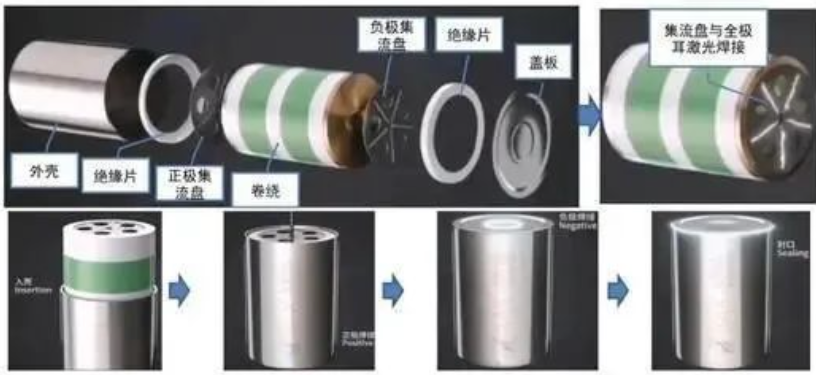
Request a Quote